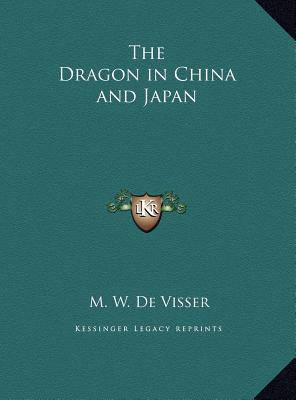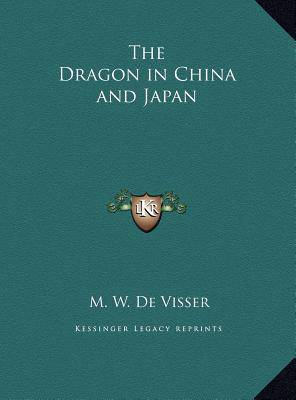
- Retrait gratuit dans votre magasin Club
- 7.000.000 titres dans notre catalogue
- Payer en toute sécurité
- Toujours un magasin près de chez vous
- Retrait gratuit dans votre magasin Club
- 7.000.0000 titres dans notre catalogue
- Payer en toute sécurité
- Toujours un magasin près de chez vous
Description
""The Dragon in China and Japan"" is a book written by M.W. De Visser that explores the cultural significance of dragons in Chinese and Japanese mythology. The book delves into the history and evolution of dragon legends in both countries, tracing their origins back to ancient times and examining how they have been interpreted and utilized in various contexts over the centuries. De Visser draws on a wide range of sources, including literature, art, and folklore, to provide a comprehensive account of the dragon's role in Chinese and Japanese culture. The book also explores the symbolism and meanings associated with the dragon, and examines how these have changed over time. Overall, ""The Dragon in China and Japan"" offers a fascinating insight into the rich and complex world of dragon mythology in two of Asia's most influential cultures.1913. In the First Book of this volume, the most interesting quotation concerning the dragon in China are systematically arranged, selected from the enormous number of passages on this divine animal found in Chinese literature from the remotest ages down to modern times. In order to give the original conceptions the author did not quote the numerous poems on the dragon, because the latter, although based upon those conceptions, enlarged them in their own poetical way. The Second Book treats of the dragon in Japan, considered in the light of the facts given by the Introduction and Book I.This scarce antiquarian book is a facsimile reprint of the old original and may contain some imperfections such as library marks and notations. Because we believe this work is culturally important, we have made it available as part of our commitment for protecting, preserving, and promoting the world's literature in affordable, high quality, modern editions, that are true to their original work.
Spécifications
Parties prenantes
- Auteur(s) :
- Editeur:
Contenu
- Nombre de pages :
- 256
- Langue:
- Anglais
Caractéristiques
- EAN:
- 9781169748699
- Date de parution :
- 10-09-10
- Format:
- Livre relié
- Format numérique:
- Genaaid
- Dimensions :
- 216 mm x 279 mm
- Poids :
- 884 g

Les avis
Nous publions uniquement les avis qui respectent les conditions requises. Consultez nos conditions pour les avis.






